There are a number of devices which contain stocks. For
example, the lunette on a guillotine is a form of stocks. A
magician’s sawing-in-half box has stocks at either end. The top
part of a pillory is a set of stocks, and the whole thing is
sometimes mistaken for stocks. But punishment stocks are a more
specific device.
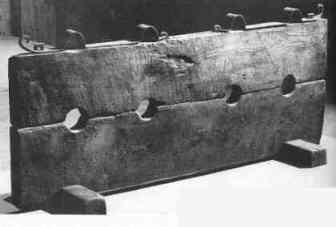 In their simplest form, these are a pair of stocks hinged
together at one end and, at the other end, a hasp and staple for
a padlock. The lower stock is fixed to the ground. The stocks
confine the victim’s ankles, who is obliged to sit in that position,
either on the ground or on a wooden bench. Some stocks have
posts at each end, with runners in which the upper stock can
slide up and down.
In their simplest form, these are a pair of stocks hinged
together at one end and, at the other end, a hasp and staple for
a padlock. The lower stock is fixed to the ground. The stocks
confine the victim’s ankles, who is obliged to sit in that position,
either on the ground or on a wooden bench. Some stocks have
posts at each end, with runners in which the upper stock can
slide up and down.More elaborate variations include additional holes to confine the victim’s hands. These can be in separate stocks above the foot stocks, or in the same stocks, either between or outside the feet. Stocks can usually accommodate two or more people.
Here are some more pictures illustrating different stocks.
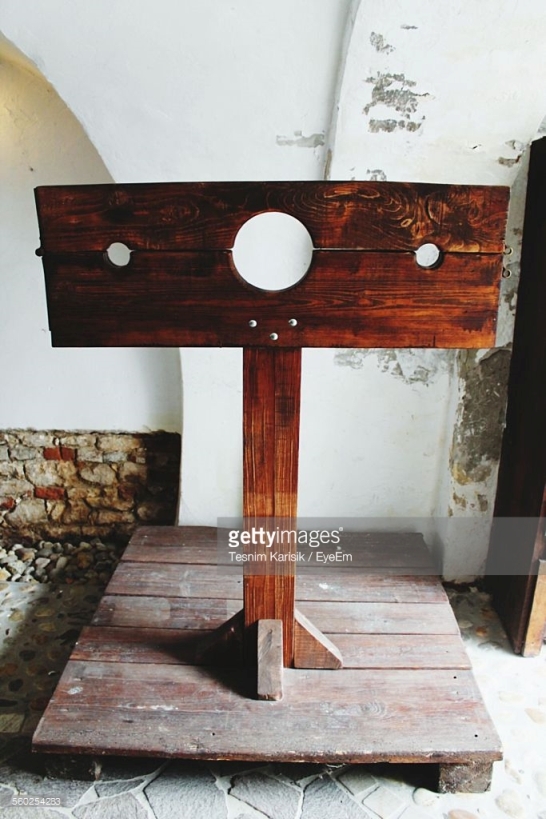 A set of stocks with three holes, one in the centre for the neck, and smaller holes each side for the wrists.
These stocks are fixed to the top of a central post (or posts at each end), obliging the occupant to
stand with his or her head and hands thus confined. Like the stocks, the upper stock can be either
hinged or in side runners.
A set of stocks with three holes, one in the centre for the neck, and smaller holes each side for the wrists.
These stocks are fixed to the top of a central post (or posts at each end), obliging the occupant to
stand with his or her head and hands thus confined. Like the stocks, the upper stock can be either
hinged or in side runners. Pillories were usually either for one or two people. Although some pillories could accommodate more by fixing one end of each set of stocks to a central post, where the stocks were arranged like the spokes of a wheel.
Here are some more pictures illustrating different pillories.
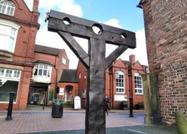
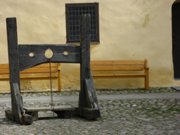
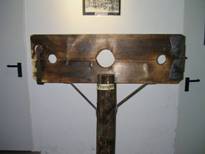
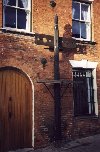
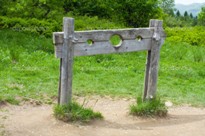
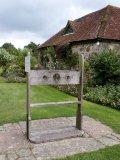
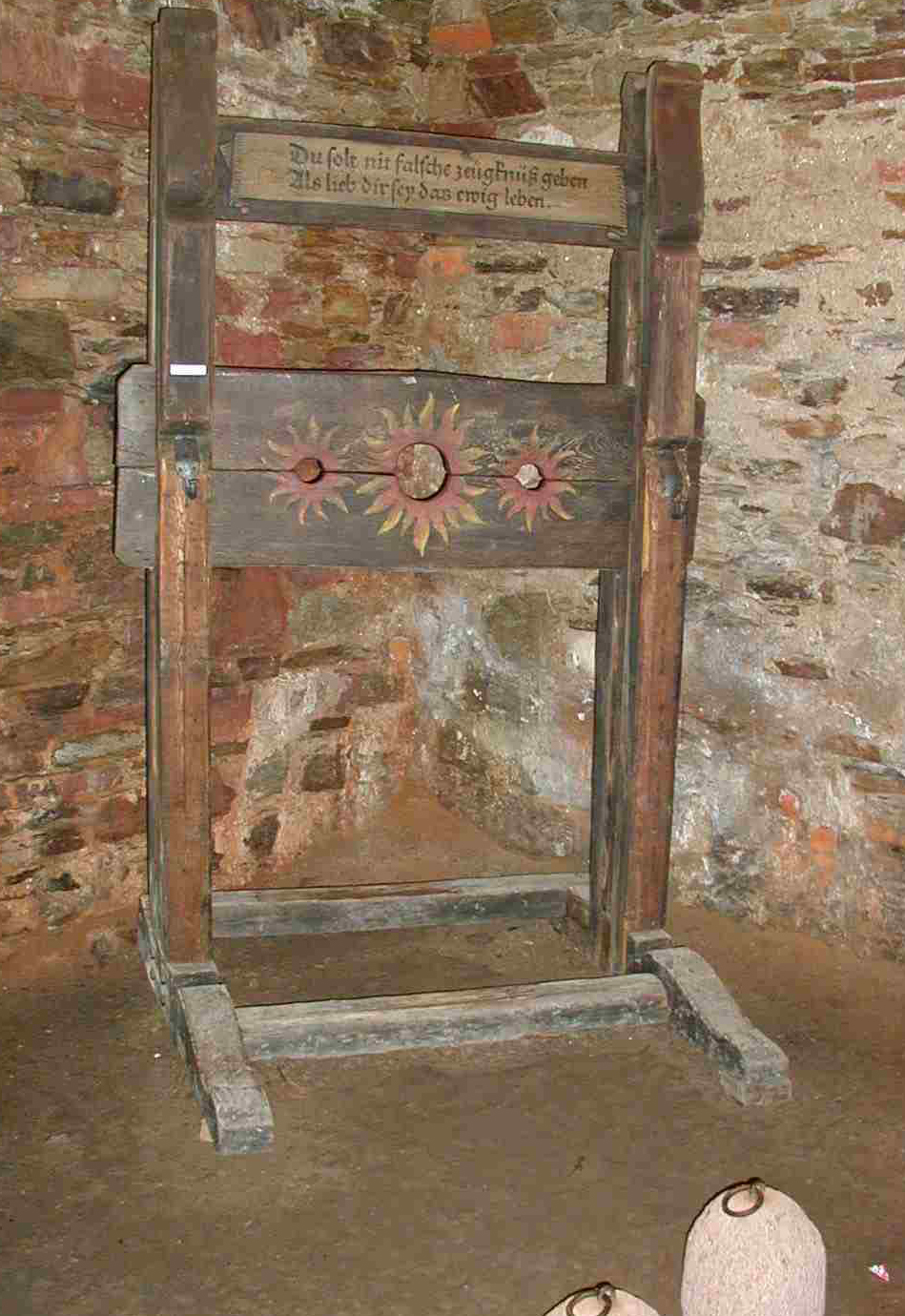
I am sometimes asked if I can provide a plan for constructing historically authentic stocks, typically by re-enactors who want realistic props for their events. Unfortunately I am unable to help with these requests, for the simple reason that there is no such thing as historically authentic stocks.
As you will see above (and elsewhere on this site), stocks come in various shapes and sizes. The only constraint is that they fulfil their intended purpose. Even the humble village stocks (with leg holes for one or two people) has many variations on the basic theme. This is not perhaps surprising when one considers how these stocks come into being.
Imagine its the middle ages and a carpenter has been commissioned to construct a set of stocks for a village. It is unlikely that he would have had any previous experience of this. He would almost certainly be illiterate and might not have travelled beyond the village in his entire life. He would either have to come up with a design for the stocks himself, or base the design on what he (or others) had seen in neighbouring villages. Either way, the stocks he produces are most unlikely to be identical to other stocks in the locality.
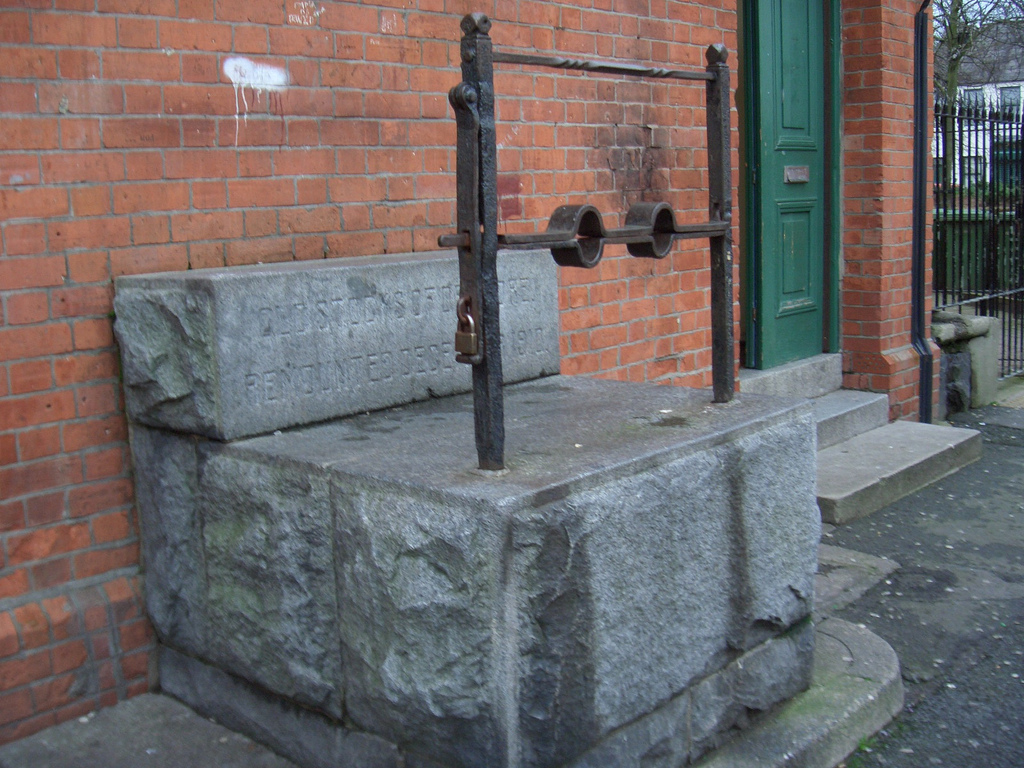 In time, the stocks created by that carpenter would deteriorate through wear and tear, exposure to the weather....and holding people who did not want to be there. The carpenter (and his descendants) would need to replace parts of the stocks, or perhaps build a replacement set. This would generate even more variations, and of course the same thing is happening in other villages too.
In time, the stocks created by that carpenter would deteriorate through wear and tear, exposure to the weather....and holding people who did not want to be there. The carpenter (and his descendants) would need to replace parts of the stocks, or perhaps build a replacement set. This would generate even more variations, and of course the same thing is happening in other villages too.
This process of divergent evolution has resulted in the many variations we see in the stocks which have survived to this day. Some stocks are made from cast iron; others have stone or concrete upright posts. Some stocks have thatched canopies to shelter occupants from the weather; and a few have even sprouted wheels.
So if you are intending to build a set of stocks, don't worry too much about historical authenticity. Perhaps look at a few "original" stocks for ideas, and then do your own thing. Much like a medieval carpenter would have done.
